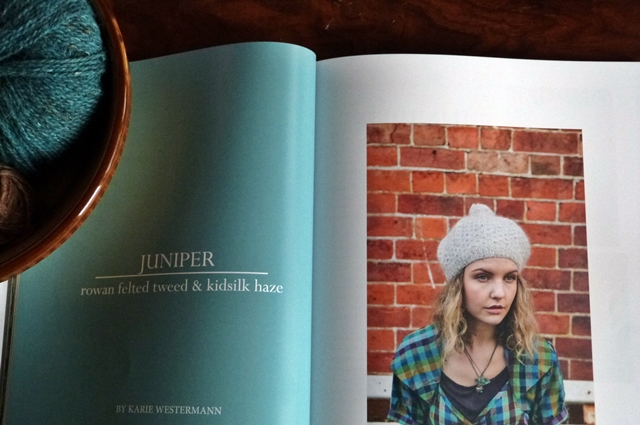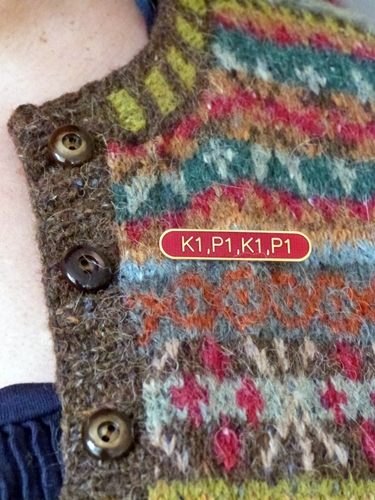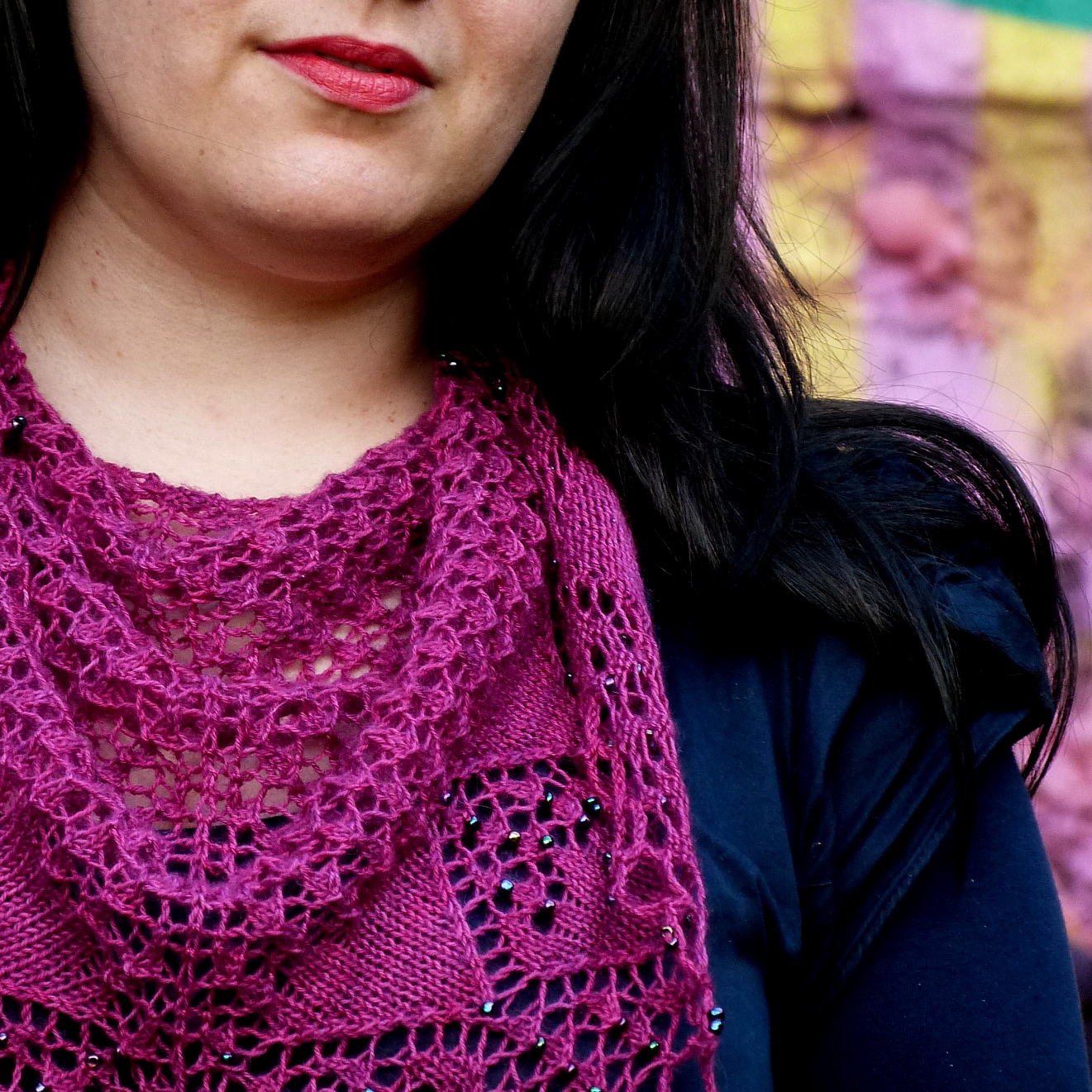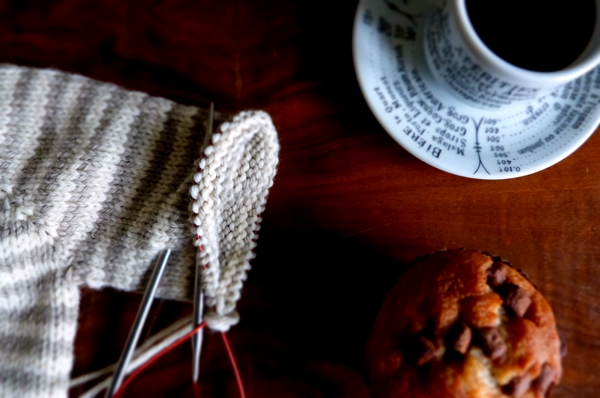A little something on the dining table today.

A book from Quail Publishing filled with the most glorious autumnal knits: The Knit Generation - curated by Sarah Hatton.
What's this?

Is that my name? I do believe so! I have two patterns in The Knit Generation and I am so awfully proud to be included. It is really the most beautiful book I have ever been involved in. Sarah has an eye for detail and her stylistic instincts are incredible. Everything from colour palette to layout has been carefully considered and I just love leafing through the end result.
The Juniper hat is one of those knits I finished and didn't want to send away. It is worked holding one strand of Rowan Felted Tweed and one strand of Rowan Kidsilk Haze together - the end fabric is lush: full of drape, full of warmth, and full of colour depth. The sample hat uses FT Clay and KSH Cream together, but I keep toying with the idea of knitting myself one for winter. Maybe holding FT Watery and KSH Trance? FT Seafarer and KSH Turkish Plum? FT Avocado and KSH Jelly? FT Rage & KSH Strawberry? Worryingly, I can do all those from stash (don't judge!). The nature of the fabric meant I didn't want a complex stitch pattern - instead I chose a simple knit and purl pattern which showcases the fabric without overshadowing it. And a pompom on top. Of course.

The other pattern is the Pinecones Shawl. It is a simple triangular shawl with an autumnal border and it is knitted in Rowan Fine Art, their handpainted sock yarn. The fibre content of the yarn is slightly unusual (it includes silk and mohair) and again it was a case of designing a pattern that emphasised the nature of the fabric (and the lovely, lovely drape).
I am teaching a class at McAree Brothers in Stirling in support of The Knit Generation - we will be taking a look at contemporary lace knitting, shawl constructions and students will have a chance to give designing their own lace a go! Something like Pinecones can look overwhelming to the uninitiated - but my aim is to demystify shawl knitting and show people just how satisfying it can be to wrap yourself in something beautiful. And if you are an old hand at lace knitting, I have a few tricks up my sleeve that'll (proverbially) blow your mind. Promise.
I designed and knitted both Juniper & Pinecones last year - it is so satisfying to finally see them in print. I am particularly pleased to see my name next to people like Andi Satterlund, Anni Howard and Rachels Coopey and Atkinson - all thoroughly good eggs.
I cannot help but laugh, though. Due to the vagaries of publishing, you will see an absolute deluge of patterns over the next few months. I apologise in advance.


 Wool Week is here.
Friends are in Shetland or down in London having all sorts of woolly fun.
Wool Week is here.
Friends are in Shetland or down in London having all sorts of woolly fun.
 There are a lot of triangles in this pattern - that was a big design decision for me. There are five different types of triangles.
There are a lot of triangles in this pattern - that was a big design decision for me. There are five different types of triangles. If you tried to visit this site recently you will have noticed that a) you couldn't connect and b) now that you can connect, some of the content is missing. The company that currently hosts this site had big issues with a server and finally recovered most of the site after nearly 24 hours. Most. I lost a couple of photos and about a month's worth of blog posts. It could have been much worse. I once lost four years of blogging thanks to my Danish web host going bust.
If you tried to visit this site recently you will have noticed that a) you couldn't connect and b) now that you can connect, some of the content is missing. The company that currently hosts this site had big issues with a server and finally recovered most of the site after nearly 24 hours. Most. I lost a couple of photos and about a month's worth of blog posts. It could have been much worse. I once lost four years of blogging thanks to my Danish web host going bust. I have had a hectic start to September, so I am pleased that I am spending most of today knitting a sample. I am trialling some new-to-me knitting needles - you can see the
I have had a hectic start to September, so I am pleased that I am spending most of today knitting a sample. I am trialling some new-to-me knitting needles - you can see the